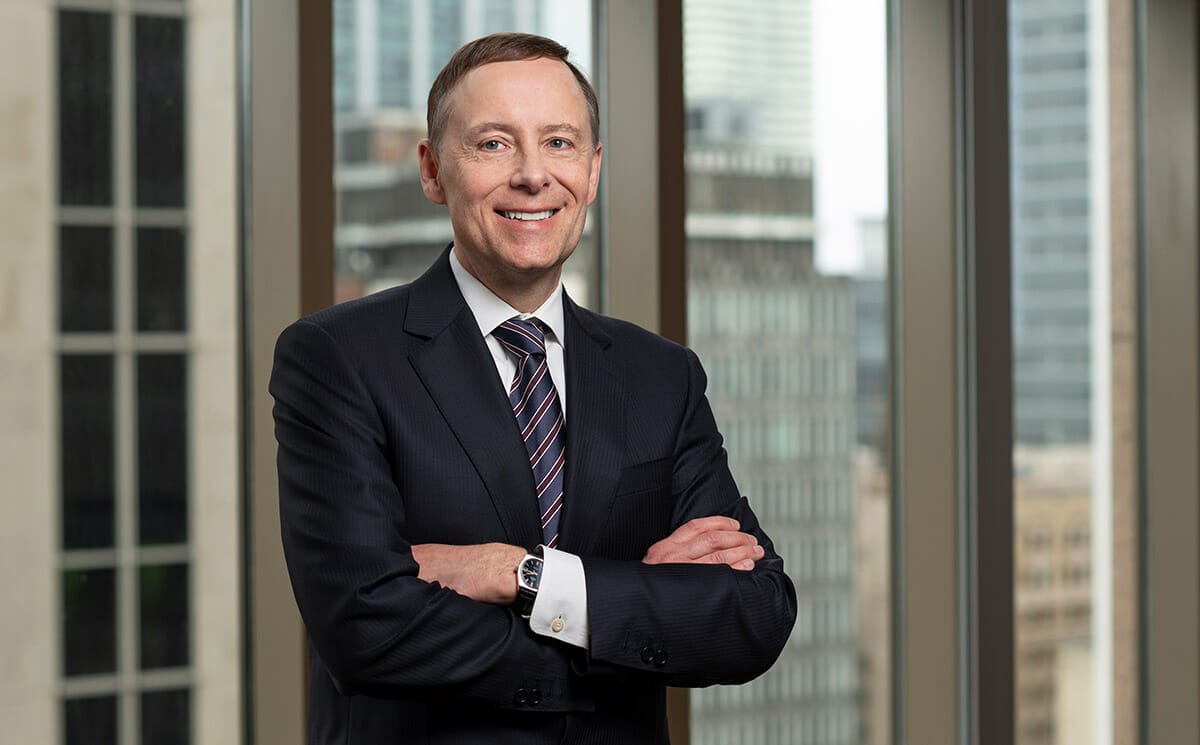In 2007, the C$94 billion Healthcare of Ontario Pension Plan (HOOPP) moved to a liability-driven investing approach, which included a large allocation to bonds and a lot of internal investment management. The approach helped the fund survive the global financial crisis and has served it well for the past 13 years. But now – with the COVID crisis and a very low interest rate environment – that approach is being revisited and the fund is looking to invest more in alpha generating assets.
“In 2007 we shifted to a liability driven approach and had a major allocation to long-term bonds which served us well through the GFC,” says Jeff Wendling, who joined the fund in 1998 and became CEO in April this year.
“Over all those years it also limited the volatility of our surplus, and did a good job of having our assets match our liabilities. That has worked out well through the 13 or so years, but now yields are very low so we are asking two things: does the liability driven strategy still make sense? And how do we build a portfolio that will generate the returns to keep HOOPP fully funded over the long term. Bonds won’t do that for us the same way they have in the past.”
The evolution of this liability-driven investment approach (known as LDI 2.0) is the exploration of what to invest in when interest rates are so low. Wendling says there is no doubt the fund will hold less bonds than it has in the past. In 2009 the fund moved from a traditional 60:40 equities/bond mix to a split of roughly 45:55 and it’s been there ever since.
“We are going to hold fewer bonds in the future. They provide minimal returns right now and also less risk mitigation benefits to the growth in our liabilities,” Wendling says. “Bonds helped us in 2008/09 during the GFC but I don’t think they will act so well if we have difficult markets going forward, so we will hold less bonds.”
Instead the fund is looking to invest in more return seeking assets – in particular increasing allocations to equities, real estate and infrastructure, which the fund is relatively late to compared with its Canadian peers.
“We will invest in more bond-like assets with higher returns such as high dividend-yielding equities. We are also looking for more alpha-generating, uncorrelated sources of return through either internal or external management, and more international diversification. All of that, we think, will help generate returns that we are not getting from our bond holdings.”
The fund started 2020 in a strong position having returned 17 per cent last year, and did buy risky assets in March and April, adding to equities, credit and provincial bond positions pushing assets to an all-time high of C$100 billion.
HOOPP launched its infrastructure program in 2019, coming late to the asset class by Canadian standards. The substantial bond holdings had served that role, but now with bonds decreasing, infrastructure is getting a look in.
The fund is managing its C$1 billion commitments to infrastructure through an internal team and is looking for some select relationships.
“This is a key asset that we think will replace some of those bonds that just aren’t yielding us the returns that we need right now,” Wendling says. “It’s going to be an important part of our assets.”
Overall in private assets HOOPP has a 25 per cent allocation, compared with some of its Canadian peers which have half their assets in private investments, so there is room to grow in private equity and real estate too.
“Those assets also have some of the hedging characteristics we look to hedge liabilities and inflation hedging aspects as well,” he says.
In terms of ongoing risk, inflation has always been something the fund has considered in a meaningful way.
The HOOPP pension benefit is based on employees’ best five years of earnings so if there is wage inflation the fund’s liabilities increase.
“We do want to look at having assets that can perform well in a higher inflationary environment. In our stress testing approach we do test severe shocks including inflation shocks,” Wendling says. “It’s a tough question at the moment and we’ve never had wider range of views on it. Inflation right now has been very well behaved and under shot what policy makers were looking for. We think it will remain pretty well behaved but the reflationary measures of policymakers will mean it will definitely lead to higher inflation, that will happen in the longer term. In a nearer time frame we think it will behave the same way it has in the past couple of years.”
HOOPP has used derivatives for a long time as a way of mitigating risks, including tail risks, but also as a way of getting its equities exposures.
By investing in derivatives it allows the capital to be invested in long-term bonds for example, Wendling says.
“Derivatives as an approach is a key part of our long-term success and will continue to be so,” he says. “We have always been very strong risk managers. The fund is getting larger, more complex and more international and we need to be constantly improving and working out our risk management capabilities.
HOOPP was one of the very early funds to go to internal investment management and move away from external management, and in a sign that the fund is looking at all aspects of the way it invests, that is now under review too.
“That has served us well and where we did use external managers it was generally in private equity. As we go forward I think trying to generate the returns we need we will be looking at new strategies, new absolute return strategies for example and will use external managers where we can in a selective way to find more diversified sources of return. We will still be largely internally managed but not as much as it has been in the past.”



